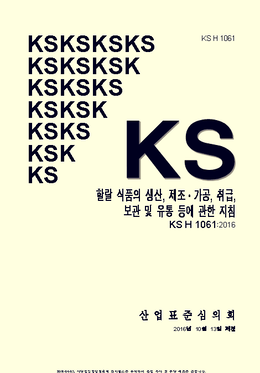KOHAS Halal Certification Standard
KOHAS Halal certification is based on KS Halal Standard set by Korean Industrial Standards .
Halal food production plants should meet this standard, and this standard will be adapted to other manufacturing & service section including cosmetics.
Requirements not defined in the standard will be guided to the plant individually.
KOHAS Halal certification is based on KS Halal Standard set by Korean Industrial Standards .
Halal food production plants should meet this standard, and this standard will be adapted to other manufacturing & service section including cosmetics.
Requirements not defined in the standard will be guided to the plant individually.
K O H A S H A L A L S T A N D A R D
Korean Industrial Standard: KS H 1061: 2016
Guidelines for production, processing & manufacturing,
|
H A L A L A P P L I C A T I O N
|



